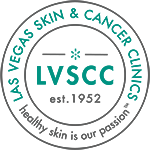Seborrheic Keratosis
About Seborrheic Keratosis
What is it?
Also known as seborrheic verruca, most people will develop at least one seborrheic keratosis during a lifetime. Seborrheic keratosis is a common skin growth. It may seem worrisome because it can look like a wart, pre-cancerous skin growth (actinic keratosis), or skin cancer. Despite their appearance, they are harmless, benign, and don’t become cancerous. They are characterized as brown, black or yellow growths that grow singly or in groups and are flat or slightly elevated. Often they are mistaken for warts and generally no treatment is required unless the growth becomes irritated. However, because it looks similar in appearance to precancerous growths, your dermatologist might biopsy the tissue to confirm the diagnosis.
What causes it?
People who are prone to develop these harmless growths tend to have fair skin, and they can also be hereditary, so check with family members if you are worried. These growths also develop in people with medium to dark skin and tend to be smaller and around the eye area. If you are pregnant or had estrogen replacement therapy, people have been known to develop these. Most people develop seborrheic keratoses later in life. People who have had a lot of sun exposure tend to develop more of these. These are not contagious, and if you are getting more of them, it’s usually due to age.
Common treatments
Trust your dermatologist to tell if your skin growth is a seborrheic keratosis or skin cancer. If there is any question we will remove the growth and do a biopsy. Most seborrheic keratoses are harmless like skin tags, and might not need treatment. Talk with your dermatologist if you have any concerns, or if they are getting irritated from rubbing or clothing. A common way of treating these is with cryotherapy, your dermatologist will apply liquid nitrogen to the growth, and will tend to fall off in a few days. There are other ways as well, and depending on your skin type your dermatologist will recommend the best solution for you. After removal, it usually does not return. We offer treatment options tailored to your needs and aesthetic goals, and we’re here to address your concerns and provide support throughout the process. Call an office today and make an appointment if you are concerned you have seborrheic keratosis.

Las Vegas Skin & Cancer Clinics
About Us
Health Library
Patient Referrals
Patient Resources
Careers
Shop
© 2023 LVSCC. All Rights Reserved. | Sitemap | Privacy Policy | Notice of Privacy Practices | Terms of Service

